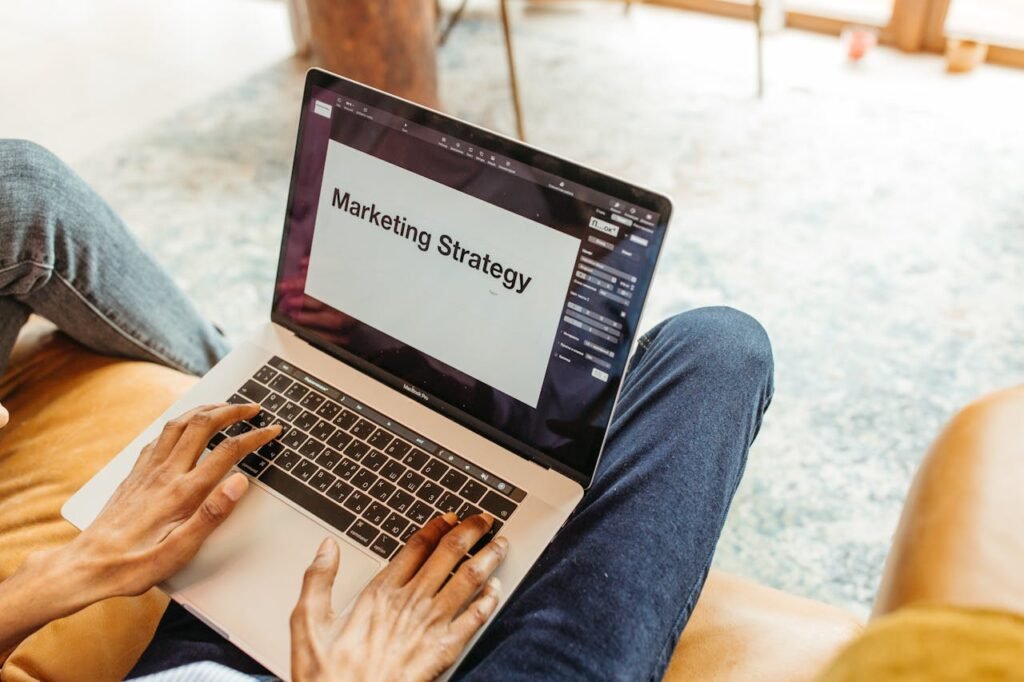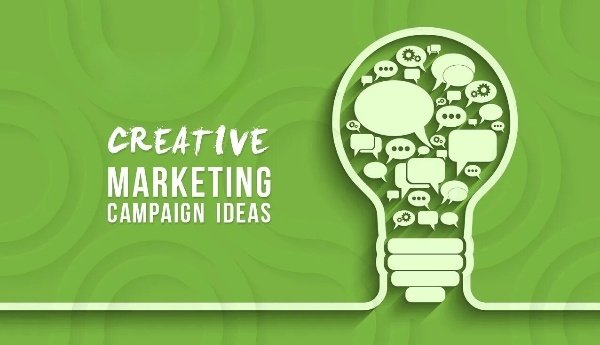In today’s competitive marketplace, standing out requires more than just traditional marketing tactics. Businesses need to think outside the box and implement innovative marketing ideas that capture attention and drive engagement. This guide will explore several examples of innovative marketing strategies that have proven successful. These ideas are practical, actionable, and designed to help your business grow.
Leveraging User-Generated Content
User-generated content (UGC) is a powerful way to build trust and engage with your audience. By encouraging your customers to create and share content related to your brand, you can amplify your reach and foster a sense of community.
Creating a Hashtag Campaign
One effective way to leverage UGC is through a branded hashtag campaign. Create a unique and memorable hashtag and encourage your customers to use it when posting about your products or services on social media. This not only increases your brand’s visibility but also provides authentic content that you can share on your own channels.
For example, a clothing brand might create a hashtag like #StyleWithUs and ask customers to share photos of themselves wearing their products. Featuring these posts on your social media profiles or website shows appreciation for your customers and encourages others to participate.
Hosting Contests and Giveaways
Contests and giveaways are another great way to generate UGC. Encourage your audience to submit photos, videos, or stories related to your brand for a chance to win a prize. This not only boosts engagement but also provides you with a wealth of content to use in your marketing.
For instance, a pet food company might run a contest asking customers to share videos of their pets enjoying their meals. The winning entry could receive a year’s supply of pet food, and all participants’ content can be featured on the company’s social media channels.
Showcasing Customer Stories
Highlighting customer stories is a fantastic way to build trust and show the real-life impact of your products or services. Feature testimonials, case studies, and success stories on your website and social media. This not only provides social proof but also makes your marketing more relatable and human.
For example, a fitness brand could share transformation stories from customers who have achieved significant health goals using their products. These stories can inspire others and demonstrate the effectiveness of your offerings.
Experiential Marketing

Experiential marketing creates immersive, memorable experiences that allow consumers to engage with your brand on a deeper level. This type of marketing fosters emotional connections and can significantly enhance brand loyalty and word-of-mouth promotion. Here are some advanced strategies for implementing experiential marketing that are particularly useful for startup founders.
Creating Immersive Brand Experiences
Immersive brand experiences allow customers to interact with your brand in a hands-on, engaging way. These experiences should be carefully designed to reflect your brand’s values and message.
For example, a tech startup could create an interactive exhibition where visitors can test their latest gadgets in a simulated environment. Imagine an augmented reality (AR) setup where attendees can see the real-world applications of the technology, such as using AR glasses to visualize architectural designs. This not only showcases the product’s capabilities but also leaves a lasting impression on potential customers.
Hosting Pop-Up Experiences
Pop-up experiences are temporary events or installations that create a sense of urgency and exclusivity. These can be used to launch new products, celebrate milestones, or simply create buzz around your brand.
For instance, a sustainable fashion startup might host a pop-up shop in a high-traffic area, offering limited-edition items made from recycled materials. The event could include workshops on sustainable fashion, live demonstrations, and opportunities for attendees to meet the designers. This approach not only drives immediate sales but also reinforces the brand’s commitment to sustainability.
Partnering with Other Brands
Collaborating with complementary brands can amplify the impact of your experiential marketing efforts. Choose partners that share your target audience and brand values to create a cohesive and compelling experience.
For example, a startup producing organic skincare products could partner with a yoga studio to host a wellness retreat. The event could feature yoga classes, skincare workshops, and relaxation sessions, providing a holistic experience that promotes both brands. This collaboration expands your reach and creates a more enriching experience for participants.
Organizing Exclusive VIP Events
Exclusive VIP events can make your most loyal customers feel valued and appreciated. These events should offer unique experiences that are not available to the general public.
A wine startup, for instance, could host an exclusive wine tasting event for its top customers. The event could include a tour of the vineyard, a guided tasting session with the winemaker, and a gourmet dinner. By offering such exclusive experiences, you strengthen the bond with your top customers and encourage them to become brand ambassadors.
Engaging All Five Senses
Experiential marketing is most effective when it engages all five senses, creating a multi-sensory experience that is memorable and impactful.
A chocolate brand, for example, could set up an immersive tasting room where visitors can see, smell, touch, and taste various chocolate creations while listening to the sounds of a cacao plantation. This sensory overload creates a rich and memorable experience that leaves a lasting impression.
Utilizing Technology to Enhance Experiences
Incorporating technology can elevate your experiential marketing efforts and create cutting-edge experiences. Use virtual reality (VR), augmented reality (AR), and interactive displays to engage your audience in new and exciting ways.
A real estate startup, for instance, could use VR to offer virtual tours of properties. Prospective buyers can explore homes in a fully immersive environment without leaving the event space. This not only showcases the properties in a unique way but also saves time and resources for both the buyers and the agents.
Creating Shareable Moments
Experiential marketing should include elements that encourage attendees to share their experiences on social media. This amplifies your reach and generates organic buzz.
For instance, a beauty brand could set up a glamorous photo booth at an event where attendees can take high-quality photos with branded backdrops and props. Encourage participants to share their photos on social media using a specific hashtag and offer incentives like a chance to win a prize. This not only spreads the word about your brand but also creates a fun and engaging experience for attendees.
Implementing Gamification
Gamification adds an element of fun and competition to your experiential marketing efforts. Create games or challenges that are relevant to your brand and encourage participation.
A fitness startup, for example, could set up a challenge at a health expo where attendees compete in fitness-related activities like obstacle courses or endurance tests. Track participants’ performances and offer prizes for the top performers. This not only draws attention to your booth but also creates a dynamic and engaging experience.
Building Community through Events
Experiential marketing can be an excellent way to build a sense of community around your brand. Host events that bring people together and foster connections among your audience.
For instance, a pet care startup could organize a pet adoption fair in partnership with local shelters. The event could include pet care workshops, free check-ups, and fun activities for pets and their owners. This not only promotes your brand but also supports a good cause and strengthens community ties.
Measuring and Analyzing the Impact
To ensure the success of your experiential marketing efforts, it’s crucial to measure and analyze their impact. Collect data on attendee engagement, social media mentions, and post-event feedback to gauge the effectiveness of your initiatives.
A craft brewery, for example, could track the number of attendees at a beer tasting event, monitor social media activity using event-specific hashtags, and collect feedback through post-event surveys. Use these insights to refine future events and improve their effectiveness.
Influencer Collaborations
Collaborating with influencers can help you reach new audiences and build credibility. Influencers have established trust with their followers, making their endorsements powerful.
Finding the Right Influencers
The key to successful influencer marketing is finding influencers whose audience aligns with your target market. Look for influencers who share your brand values and have high engagement rates. Micro-influencers, with smaller but highly engaged followings, can often be more effective than celebrities with millions of followers.
For example, a sustainable fashion brand might partner with influencers who promote eco-friendly lifestyles. These influencers can create content featuring your products and share their honest reviews with their audience.
Co-Creating Content
Involve influencers in the content creation process to make the collaboration more authentic. Co-create content that showcases your products in a natural and engaging way. This could include product reviews, tutorials, or behind-the-scenes looks at how the product is made.
A skincare brand, for example, could collaborate with beauty influencers to create tutorial videos demonstrating how to use their products as part of a daily skincare routine. This type of content provides value to the audience while promoting your products.
Hosting Takeovers
Allow influencers to take over your social media channels for a day. This can provide a fresh perspective and introduce your brand to the influencer’s followers. Plan the takeover in advance to ensure it aligns with your brand message and goals.
For instance, a fitness brand might invite a popular fitness influencer to take over their Instagram account for a day, sharing workout tips, healthy recipes, and personal stories. This can drive engagement and attract new followers to your brand.
Utilizing Video Marketing
Video marketing is a versatile and powerful tool that can help you engage your audience, convey complex information, and showcase your brand’s personality. By leveraging the unique strengths of video content, you can create memorable experiences that drive engagement and conversion. Here are some advanced strategies for utilizing video marketing effectively.
Creating Behind-the-Scenes Content
Behind-the-scenes videos give your audience a glimpse into the inner workings of your business. This type of content humanizes your brand and builds a stronger connection with your audience by showing the people and processes behind your products or services.
For example, a startup in the food industry could create a behind-the-scenes video that showcases the journey of their ingredients from farm to table. This could include visits to suppliers, insights from the chefs, and the final preparation of the dishes. Highlighting your commitment to quality and transparency can build trust and differentiate your brand.
Implementing Customer Testimonials
Customer testimonials in video format are particularly powerful because they add a personal touch and authenticity that written testimonials cannot match. Video testimonials allow potential customers to see and hear real people talk about their positive experiences with your brand.
For instance, a software startup could feature videos of satisfied customers discussing how the product solved a specific problem or improved their business operations. These testimonials can be shared on your website, social media channels, and in email marketing campaigns to build credibility and trust.
Hosting Webinars and Live Q&A Sessions
Webinars and live Q&A sessions provide a platform for in-depth discussions and direct interaction with your audience. These sessions can be used to demonstrate your expertise, address common questions, and provide valuable insights.
A marketing consultancy, for example, could host monthly webinars on topics such as “Digital Marketing Trends” or “SEO Best Practices.” During these sessions, the consultants can share their knowledge, answer questions in real-time, and offer actionable tips. Promote these webinars through your website, social media, and email newsletters to attract a large audience.
Producing Educational Series
Educational video series can position your brand as an industry authority and provide ongoing value to your audience. These series should be well-planned and cover a range of topics relevant to your audience’s interests and needs.
A financial services startup, for instance, could produce a series of videos on financial literacy, covering topics such as budgeting, investing, and retirement planning. Each video can delve into a specific topic, providing detailed explanations and practical advice. This approach not only educates your audience but also encourages them to trust your expertise.
Utilizing Short-Form Content
Short-form videos are ideal for capturing attention quickly and delivering concise, impactful messages. Platforms like TikTok, Instagram Reels, and YouTube Shorts are perfect for short-form content that can be easily consumed and shared.
For example, a beauty brand could create short, engaging videos that showcase quick makeup tutorials, product highlights, or beauty hacks. These videos should be visually appealing, fast-paced, and aligned with the trends and aesthetics of the platform. Short-form content can drive high engagement and increase your brand’s visibility among younger audiences.
Creating Interactive Videos
Interactive videos allow viewers to engage with the content by making choices that affect the outcome. This type of video can create a more immersive experience and keep viewers engaged for longer periods.
A travel agency, for example, could create an interactive video where viewers can choose different travel destinations and activities, experiencing a virtual tour based on their selections. This not only engages viewers but also provides valuable insights into their preferences, which can be used for targeted marketing efforts.
Using Animation and Motion Graphics
Animation and motion graphics can simplify complex concepts and make your videos more engaging and visually appealing. These techniques are particularly useful for explaining products or services that involve intricate details or abstract concepts.
A tech startup, for example, could use animated explainer videos to demonstrate how their software works, breaking down complicated processes into easy-to-understand visuals. This approach can make your content more accessible and engaging, helping potential customers grasp the value of your offering quickly.
Personalizing Video Content
Personalized video content can make your marketing efforts more relevant and impactful. Use data to tailor videos to individual viewers based on their preferences, behaviors, and interactions with your brand.
For instance, an e-commerce company could send personalized video messages to customers, thanking them for their purchase and recommending complementary products based on their purchase history. Personalized videos can enhance the customer experience, increase engagement, and drive higher conversion rates.

Collaborating with Influencers
Collaborating with influencers to create video content can help you reach new audiences and build credibility. Choose influencers who align with your brand values and have a strong connection with your target audience.
A fitness brand, for example, could partner with popular fitness influencers to create workout videos featuring their products. These collaborations can introduce your brand to the influencer’s followers, providing social proof and boosting your brand’s visibility.
Measuring and Analyzing Video Performance
Regularly measure and analyze the performance of your video content to understand what resonates with your audience and where improvements can be made. Use metrics such as views, engagement rates, watch time, and conversion rates to gauge the effectiveness of your videos.
A clothing retailer, for instance, could track the performance of their product demo videos to see which styles generate the most interest and sales. Use these insights to refine your video content strategy, focusing on the types of videos and topics that drive the best results.
Implementing Interactive Content
Interactive content engages your audience by requiring their participation. This type of content can be more engaging and memorable than passive content.
Developing Quizzes and Polls
Quizzes and polls are fun ways to engage your audience and gather valuable data about their preferences and behaviors. Create quizzes that are relevant to your products or services, and use the results to provide personalized recommendations.
For example, a beauty brand might develop a skin type quiz that helps users determine the best skincare routine for their needs. At the end of the quiz, provide tailored product recommendations based on their results.
Creating Interactive Infographics
Interactive infographics allow users to engage with the content by clicking, scrolling, or hovering over different elements. This can make the information more engaging and easier to understand.
A financial services company, for instance, could create an interactive infographic that helps users understand different investment options. Users could click on various sections to learn more about each option and see how they compare.
Offering Interactive Calculators
Interactive calculators can provide immediate value by helping users solve specific problems or make informed decisions. These tools can be particularly effective for industries where numbers and calculations are essential.
A mortgage company, for example, could offer an interactive mortgage calculator that allows users to input their income, expenses, and other factors to estimate their monthly payments. This not only engages users but also positions your company as a helpful resource.
Engaging Through Email Marketing
Email marketing remains a highly effective way to communicate with your audience, nurture leads, and drive conversions. Personalization and segmentation are key to making your email marketing efforts successful.
Personalizing Email Content
Personalization goes beyond just using the recipient’s name. Use data to tailor the content of your emails to the recipient’s preferences, behaviors, and past interactions with your brand.
For example, an e-commerce store might send personalized product recommendations based on a customer’s past purchases and browsing history. Including personalized offers and discounts can also increase the effectiveness of your email campaigns.
Segmenting Your Email List
Segmenting your email list allows you to send more targeted and relevant messages. Divide your subscribers into different groups based on demographics, purchase history, engagement levels, and other criteria.
A travel agency, for instance, could segment their email list into groups such as adventure travelers, luxury travelers, and family travelers. Each segment can receive tailored content that speaks to their specific interests and needs.
Automating Email Campaigns
Automation helps you maintain consistent communication with your audience without manual effort. Set up automated email workflows for various scenarios, such as welcome emails for new subscribers, abandoned cart reminders, and follow-ups after a purchase.
For example, a subscription box service might set up an automated welcome series that introduces new subscribers to their service, shares tips on getting the most out of their subscription, and offers a discount on their first box. Automated emails ensure timely and relevant communication, enhancing the customer experience.
Utilizing Guerrilla Marketing Tactics
Guerrilla marketing tactics are unconventional and highly creative strategies designed to achieve maximum exposure with minimal investment. These tactics can be particularly effective for startups that need to make a significant impact without a large marketing budget. Here are more unique and actionable guerrilla marketing ideas that can help your startup stand out.
Leveraging Public Installations
Public installations can capture the attention of passersby and create memorable experiences. These installations should be eye-catching, interactive, and closely related to your brand message.
For instance, a tech company launching a new gadget could create an installation in a busy city square where people can test the product in a creative setting. Imagine a giant interactive smartphone display that allows users to explore the features of the new device. This not only generates buzz but also provides potential customers with a hands-on experience.
Organizing Street Performances
Street performances can draw crowds and create a buzz around your brand. These performances should be entertaining and relevant to your brand’s identity.
For example, if you own a music streaming service, you could organize a live street concert featuring local bands or musicians. Passersby can enjoy the music, and you can hand out promotional materials or offer free trials to your service. Ensure you capture the event on video and share it on social media to extend its reach.
Conducting Pop-Up Events
Pop-up events are temporary setups that create a sense of urgency and exclusivity. These events can be used to launch new products, offer exclusive deals, or simply generate buzz.
For instance, a food and beverage startup could set up a pop-up cafe in a trendy neighborhood, offering free samples of their new products. The limited-time nature of the event encourages people to visit, and the free samples entice them to try your offerings. Promote the pop-up event through social media and local influencers to attract a larger audience.
Using Flash Marketing
Flash marketing involves creating sudden, surprising events that catch people off guard and generate immediate interest. These events should be well-planned and executed to maximize their impact.
A fitness brand, for instance, could organize a flash workout session in a public park. A group of fitness trainers could lead a spontaneous exercise class, inviting onlookers to join in. This not only draws attention but also allows people to experience your brand in a fun and engaging way. Record the event and share it on your social media channels to reach a broader audience.
Engaging in Product Drops
Product drops involve releasing a limited quantity of a new product at an unexpected time, creating a sense of urgency and exclusivity. This tactic is often used in the fashion and tech industries but can be adapted for other sectors as well.
A fashion startup, for example, could announce a surprise drop of a new clothing line through social media, available only for a limited time or in limited quantities. Promote the drop through your email list and social media channels to generate excitement and drive sales. The exclusivity of the event encourages quick action from your audience.
Incorporating Environmental Design
Environmental design involves transforming public spaces in a way that promotes your brand. This could be through creative use of street furniture, sidewalks, or buildings.
For instance, a sustainable product company could create temporary installations made from recycled materials in a park or urban area. These installations can highlight the environmental benefits of your products and attract attention from people passing by. Ensure your brand’s logo and messaging are prominently displayed to maximize visibility.
Creating Interactive Street Art

Interactive street art can engage the public and encourage them to interact with your brand in a fun and memorable way. This could include murals, sculptures, or other forms of art that invite participation.
A travel agency, for instance, could commission a 3D street painting that depicts a popular travel destination. Passersby can take photos with the artwork and share them on social media, using a branded hashtag. This not only generates buzz but also creates user-generated content that can be shared by your brand.
Executing Surprise Giveaways
Surprise giveaways can delight your audience and create positive associations with your brand. These should be unexpected and offer genuine value to the recipients.
For example, a beverage company could set up a branded vending machine in a busy area that dispenses free drinks at random times. Passersby who receive the free drinks are likely to share their experience on social media, generating word-of-mouth promotion. Ensure your branding is clear and visible to maximize the impact.
Utilizing Guerrilla Projection Advertising
Projection advertising involves projecting images or videos onto buildings or other large surfaces in high-traffic areas. This can create a dramatic visual effect and attract significant attention.
A movie streaming service, for instance, could project trailers of new releases onto the side of a popular building in a busy nightlife district. This not only promotes the new content but also creates an immersive experience for potential customers. Coordinate with local authorities to ensure compliance with regulations and maximize the visibility of your projection.
Implementing Flash Mobs with a Twist
Take the concept of a flash mob to the next level by incorporating a unique twist that ties directly into your brand’s message. This could involve a coordinated performance that includes elements related to your product or service.
For instance, a tech startup could organize a flash mob where participants suddenly appear and start using your new gadget in a synchronized manner. This could be something like a new wearable device that tracks fitness, with participants demonstrating its features in a choreographed routine. The unexpected nature of the event and its direct connection to your product can create a memorable experience that people will talk about and share online.
Conclusion
Innovative marketing ideas are essential for standing out in a competitive landscape. By leveraging user-generated content, experiential marketing, video marketing, interactive content, and guerrilla tactics, you can create memorable and engaging experiences for your audience. These strategies help build strong emotional connections, enhance brand loyalty, and drive long-term success.
Read Next:
- Creative Marketing Strategies for Yearbooks
- How to Market Sports Teams and Events
- Creative Summer Marketing Strategies for July
- Creative Marketing Ideas for Graduation Caps
- Fall Marketing Ideas to Try in November






















Comments are closed.